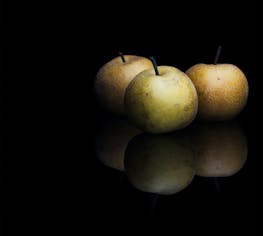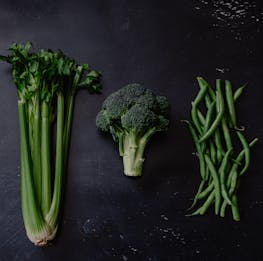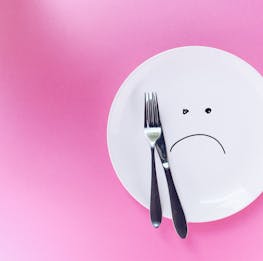The Plant Paradox Summary
The Hidden Dangers in “Healthy” Foods That Cause Disease and Weight Gain
We've been told that we should be upping our intake of fruits and vegetables if we want to live more fruitful lives. However, as with animals, all plants are created equal; some are just more equal than others.
The Plant Paradox cautions us against assuming that all plants are healthy. By examining our diets alongside those of our ancestors, we're shown what we should be eating, and what we should be avoiding, so that we can lead healthier lives.
Steven Gundry is a leading voice in diet and health, as director of the Center for Restorative Medicine in California. He's also a former professor and cardiac surgeon.
Whole food plant-based diets are all the rage. Books such as Fiber fueled and How Not to Die, boast about the health benefits of such diets. However, Gundry gives us the paradoxical take on plants, and argues that even "health" foods like fruit and vegetables can actually be harmful to the body. This doesn't mean we can throw away the kale in favor of candy, but rather become more critical of our salad bowls, and learn how to eat in a whole new way.
This Briefer summary explores why plants don't want to be eaten, the importance of maintaining gut health, what we should be eating, and whether supplements should be part of our daily ritual.
Plants Don't Want To Be Eaten
How many eating programs, health plans, and fad diets have you come across?
There are countless eating programs that promise weight loss and a healthier lifestyle. We've been bombarded with low-carb, keto, whole food, paleo, and numerous other plans promising to be the last word on the subject. The Plant Paradox Program (PPP) is different because it looks at the way foods and products affect our bodies and immune systems. By understanding the "right" and "wrong" plants, the idea is that we'll be able to cultivate better diets and ward off chronic and autoimmune diseases.
Gundry argues that plants have an impressive array of defense tactics that protect themselves from predators. And it's these defense strategies that make the seemingly virtuous plants such as fruits, vegetables, nuts, seeds, and grains, "less good" for us.
One of the main culprits is lectins. Many plant foods harbor lectins, which are "antinutrients" that are said to cause weight gain and a host of chronic diseases. Some people, particularly those with preexisting digestive problems, are even more susceptible to lectin's effects.
It gets confusing because just about every organism, from plants to animals to microbes, contains lectins; some are safe to consume, while others may pose health risks. The primary sources of lectins in the standard American diet include dairy products, beans, other legumes, wheat and grains, and specific vegetables and fruits. This means that the foods we consider to be healthy, might be the opposite.
Lectin Is a Defense Mechanism
If you think plants are more than happy to be our next meal, think again. A crucial weapon in their arsenal is a family of plant proteins called lectins that live in most plants' leaves, skins, and grains. Gundry argues, 'Quite simply, plants don't want to be eaten – and who can blame them? Like any living thing, their instinct is to propagate the next generation of their species.'
Animals have developed defense mechanisms that protect them against predators, and in the same way, plants have a similar approach to protect themselves and their seeds. Plants want to ensure that their species carry on, so they have a variety of ways to keep themselves safe. Many plants produce toxins, including lectins, that can poison, paralyze, or disorientate – or, in some cases, they can simply be difficult to digest.
Lectins are powerful and can kill bugs. Humans have the advantage of being big, so while the lectins might not kill us, they do have a cumulative and damaging effect. Over time we may notice an increase in weight, inflammation, joint pain, diabetes, and disease.
Have you ever experienced brain fog? Well, if you have, it may be because of the last meal you ate. Lectins are often referred to as "sticky proteins" because they bind so easily to molecules in our bodies. When we eat lectins, they bind to sugar molecules in the brain and nerve endings. This means that cells and nerves can't communicate properly, which results in that foggy feeling or problems focusing or remembering things.
Lectins can also contribute to additional weight gain because they mimic hormones that trigger our bodies to react by storing fat. One such lectin is wheat germ agglutinin (WGA). It's found in wheat and causes sugar to enter fat cells, converting them into fat, and making us fat in the process. WGA was advantageous for our ancestors because it helped them put on a few extra kilograms in the winter. The so-called "wheat belly" helped them survive cold winters, and famines. Nowadays, we have an abundance of food and heat sources, so very few of us need to put on winter weight.
Sticky proteins also create gaps in the intestinal wall barrier, and then breach through the wall, attacking our immune system. This causes inflammation and makes us susceptible to viral and bacterial infections. Of course, our bodies have ways to protect themselves against lectins. For example, saliva and mucus contain sugars that lectins naturally bind to. These sugars are meant to trap the lectin before they reach our digestive tract. Our stomach acid also digests specific lectins, and an additional mucus layer on our intestines acts as a final line of defense to trap the lectins and prevent them from interfering with the intestinal wall.
The trouble is if we consume too many lectins, there's a compound effect that overwhelms our defenses.
A Quick Biology Lesson
Let's begin by taking a quick look at how the digestive tract works.
The gastrointestinal tract contains trillions of microbes. In fact, 90% of all body cells are non-human. Microbes convert food into energy, and without them, food would be useless to us. This symbiotic relationship means that we need them, and they need us.
There are good and bad microbes. Harmful microbes hijack the communication between our gut and brain, driving us to crave sugars and fats. Good microbes promote digestion, immunity, and ward off cravings. Importantly, good microbes help break down lectins.
Lectins increase the permeability of the intestinal tract and allow these bacteria, undigested food particles to spill out and get into our bloodstream, organs, and other areas of our body. To visually understand this, imagine a healthy gut lining as a shag carpet. The microvilli in our intestines look like shag carpeting, and we absorb all of our nutrients through each shag. Lectins wear the microvilli down, the shag disappears, and we're left with flat carpet. So, lectins weaken the defenses in our intestinal tracts, making us more susceptible to illnesses like Crohn's disease or inflammatory bowel disease.
The trouble is, the modern American diet is overladen with lectins. The agricultural revolution introduced grain and beans into our diet, making these foods our primary food source. "Whole grains" are deemed a healthy food, so we incorporate them into our diets. But all this means is that we are just consuming more lectins. In addition, we eat more processed food than ever before. This increased consumption of genetically modified organisms (GMOs), such as corn, soy, etc., has introduced us to a whole new array of lectins.
Furthermore, we ingest more chemicals than before. If we consider the vast number of broad-spectrum antibiotics, nonsteroidal anti-inflammatories, sweeteners, and so forth, they are all responsible for destroying the good gut bacteria that helps process and remove the lectins. In short, we're left with a vicious cycle. We're less able to process lectins, and at the same time, we are consuming them more heavily than ever before.
Now that we know lectins are bad news, and that our assumed to be healthy diet is lectin laden, what can we do to prevent them from causing harm to us? Gundry offers us his plant paradox diet.
The Plant Paradox Program
The PPP is based on the premise that small things can cause big problems. The key to our health is less about what we add to our diet and more about what we remove. And, what we don't eat is more important than what we eat, because eating the wrong things leads to harmful reactions in our bodies.
So what does a lectin-free diet look like? Gundry advises avoiding all legumes. This means lentils, peas, and all the types of beans, as these foods contain the highest lectin. We also need to say goodbye to "nightshade vegetables," such as tomatoes and eggplant. It's also bad news for any dairy, and products containing wheat flour.
The advantage of the PPP is that there's no calorie counting. Instead, we can eat as much of the right food as we want, and still lose weight. It's recommended that we follow a diet that relies on pasture-raised meats and eggs; fermented foods like sauerkraut; limited fruit; foods high in resistant starches; vegetables that are not in the nightshade family; and healthy fats such as olive oil. The book provides us with an exhaustive list of lectin-containing foods as well as simple substitutes for each. And, like most nutrition books, we're given a step-by-step detox and eating plan, and easy lectin-free recipes to make at home.
An Overview of PPP Phases of the Detox and Eating Plan
There are three phases to the PPP.
Phase one is a three-day cleanse. The cleanse is designed to starve the harmful bacteria and get our gut into a good condition for the next phase. A damaged gut cannot reap all the benefits from good foods.
The idea is a three-day cleanse where we remove any traces of lectin, enabling the gut to start healing itself. The three-day cleanse means eliminating fruit, legumes, grains, sugar, dairy, seeds, soy, beef, tomatoes, and root vegetables. And you may be thinking, "What can I eat?" Fear not; you won't starve. There are plenty of other nourishing foods to pick from. Why not start your morning with a delicious body-cleansing green smoothie made from spinach, mint, and avocado? And why not end the day with wild-caught fish served with cauliflower, cabbage, or broccoli?
After the initial cleanse, phase two is a six-week gut repair. Six weeks is how long it takes to cement our new eating habits and to start making significant progress in repairing the gut. After six weeks, we can begin reintroducing certain lectin-containing foods or continuing in phase two indefinitely. But be warned, before it gets better, it might get worse. Expect the first two weeks to be tough.
From books such as Eat Move Sleep, The Power of Habit, Eat That Frog, and Extreme Ownership, we've learned that habit change isn't easy. When it comes to significant diet and lifestyle overhauls, we may potentially experience some withdrawal symptoms from the foods we've eliminated. It's good to prepare yourself for low energy, muscle cramps, headaches, and irritability, but you should start to see results by the end of two weeks.
Then get ready for phase three, where we fully embrace the PPP lifestyle. Now that we've restored a healthy microbiome, we can try to reintroduce some lectin-containing foods. Still, if you're particularly sensitive to lectins, you may not want to reintroduce them at all. The final phase is about implementing a lifestyle that can be maintained for the rest of our lives. This means we continue eating all PPP-approved foods, avoiding most off-limit foods, slowly reintroducing peeled and deseeded nightshades, squash vegetables, pre-cooked legumes, and white basmati rice.
If we reintroduce legumes, pre-cooking them is essential. In 2012 the Centre for Disease Control claimed that one-fifth of all food poisoning incidents in the US were left and found in undercooked legumes. This is because legumes, especially beans, contain more lectins than any other food group. It's also vital to increase ketogenic fats such as MCT oil and coconut oil. And it's not just about what we eat, but how we eat. Opt for healthier eating habits, so eat less frequently, and eat less food overall. Gundry even suggests trying regular intermittent fasting, or stretching the time we eat between meals.
Supplements to the Rescue
While it all starts with ridding our diets of harmful foods, we also need to supplement them with more nutrients. The problem is that modern-day foods don't contain the high number of nutrients that they did historically, so we should be looking towards supplements.
Scientific discoveries in 1936 revealed that fruits and vegetables consumed by American citizens were lacking specific vitamins and minerals. Things haven't changed that much, and the fruits and veggies we're consuming have lost most of their nutritional value. A 2003 report examining the nutrient value of fruits and vegetables, showed that since 1940, there'd been a steady decline in vitamins and minerals.
The good news is that nowadays, we can compensate using supplements. Gundry advises taking vitamin B12, and vitamin D.
Vitamin D is crucial for cell regeneration in intestinal walls, and vitamin B12 helps protect the inner lining of our blood vessels.
By taking supplements, we can fill in the gaps where our diet can't.
In Conclusion
While PPP might not be for everyone, it does offer us a lot of food for thought. Whether we accept Gundry's advice or not, all of us need to look at the compound effects of our lifestyle and diet. Everything that we put into our mouths, and every time we forego exercise, has a drastic impact on our bodies.
Diet has a massive effect on our health and wellness, and we can decide on how healthy or sick we are. For Gundry, the best diet limits lectin intake, focuses on gut health, and is future-focused.
The fruitful takeaways are to be wary of fruit. To avoid the vegetative state of brain fog, examine what vegetables you're eating. And to prevent gas, bloating, and indigestion, ask if you've "bean" eating too many beans and legumes.




